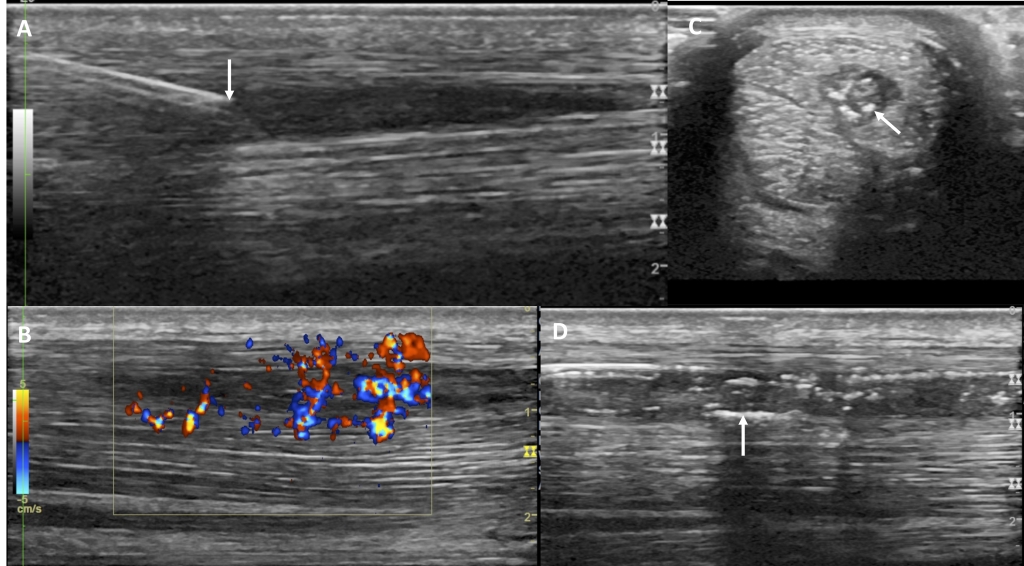
EVJ Sounds Out Progress In Treatment Of Tendon And Ligament Injuries
Despite the horse’s unfortunate predilection for tendon and ligament injuries of the lower limb, there is still no ‘one size fits all’ treatment solution. However, this doesn’t mean there hasn’t been significant scientific progress. In the latest virtual issue of the Equine Veterinary Journal (EVJ) guest editor Roger Smith has chosen 13 articles from the EVJ on the subject. His intention is to redress the balance of veterinary practitioners being more interested in knowing if treatments work rather than why they work. The virtual collection is free to view here for 12 weeks and marks Roger’s recent appointment as president of BEVA.
Tendon and ligament disease of the distal limb and the factors affecting treatment are complex, with variation in the severity of injury and variability in outcome between similarly affected horses. Understanding of the pathogenesis and improved diagnostic and predictive tools should enable the development of more effective treatments in the future.
There have been major advances in tendon and ligament disease research during the past 30 years. The 13 papers published in this new EVJ collection have been selected from the past five years to show progress in three key areas: pathophysiology – understanding why injuries occur and how they heal; progress in regenerative medicine; uncommon tendon and ligament injuries.
· Microdamage in the equine superficial digital flexor tendon provides a review of what is currently known about tendon pathophysiology as well as the effect of ageing and the response to injury.
· Modelling the effect of race surface and racehorse limb parameters on in silico fetlock motion and propensity for injury provides further evidence of how mechanical loading can adversely influence the palmar tendons and ligaments.
· Ultrasound tissue characterisation of the superficial digital flexor tendons in juvenile Thoroughbred racehorses during early race training suggests that there are short-term changes with the onset of training, although it is not possible to know, at this stage, whether these changes have any relationship to the risk of injury.
· The use of sonoelastography to assess the recovery of stiffness after equine superficial digital flexor tendon injuries: A preliminary prospective longitudinal study of the healing process. This study potentially presents another way to monitor tendon healing and predict outcomes.
· Ultrasonographic-based predictive factors influencing successful return to racing after superficial digital flexor tendon injuries in flat racehorses: A retrospective cohort study in 469 Thoroughbred racehorses in Hong Kong: This work confirms that lesion size was predictive of outcome.
· Effect of circadian rhythm, age, training and acute lameness on serum concentrations of cartilage oligomeric matrix protein (COMP) neo-epitope in horses. This study provides important information to establish a clinically useful blood assay for tendon and ligament injury in the future.
· Retrospective analysis of local injection site adverse reactions associated with 230 allogenic administrations of bone marrow-derived mesenchymal stem cells in 164 horses. This work reports the highest frequency of reactions for synovial cavities and the injection of collateral ligaments of the distal interphalangeal joint.
· Ultrasound-guided injection of the cranial tibial artery for stem cell administration in horses reports an alternative delivery of stem cells via the cranial tibial artery to hindlimb structures where intralesional treatment is not possible.
· Extracellular vesicles from equine mesenchymal stem cells decrease inflammation markers in chondrocytes in vitro investigates how MSCs potentially act.
· Retrospective analysis of oblique and straight distal sesamoidean ligament desmitis in 52 horses includes a technique for optimising ultrasonography for imaging oblique DSL injuries.
· Magnetic resonance imaging and histopathological evaluation of equine oblique sesamoidean ligaments raises the question of whether many of these ligament injuries are being missed in practice.
· Magnetic resonance imaging following regional limb perfusion of gadolinium contrast medium in 26 horses considers how this method may enhance the identification of pathology within the foot.
· Chondrosesamoidean ligament enthesopathy: Prevalence and findings in a population of lame horses imaged with positron emission tomography. This study looks at how this new diagnostic technique may identify a new soft tissue injury within the foot.
“The field of tendon research is generating a healthy amount of quality research to counter the commonly held belief that there is nothing better than a double helping of God and time,” said Roger Smith. “Bit by bit we are moving closer to the holy grail of ideally preventing, or successfully treating, these injuries.”
“This collection provides an essential educational insight into the significant progress that has been made in tendon and ligament disease research over the past five years,” said Professor Celia Marr, Editor of the EVJ. “By giving veterinary practitioners the opportunity to understand the science and the variables behind why a specific treatment may work is a fundamental step towards the ultimate goal of reliable treatment success.”
The virtual issue can be found at
https://onlinelibrary.wiley.com/doi/toc/10.1001/(ISSN)2042-3306.tendoninjury and will be free to view until 27 February 2024.
More from BEVA

 2 years ago
2 years ago  909 views
909 views
